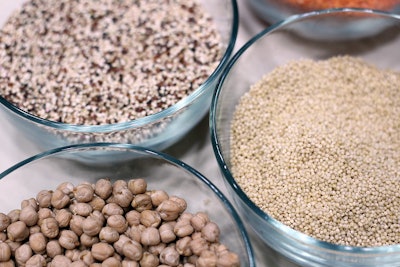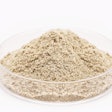
A recent report from OC&C Strategy Consultants, a global management consulting firm, shared insights into the U.S. pet market. The report noted the U.S. dog and cat food and treats market is currently valued at $50 billion, with the dog segment accounting for two-thirds of the spend while the cat segment is seeing increased growth.
OC&C said this growth has been driven by premiumization, COVID-19 and inflation-driven factors. While growth has slowed in the past two years, it is expected to return to pre-COVID levels over the next 3 to 5 years, with premium products continuing to be a major driver. Despite the premium segment already accounting for 30% of the dog food market (and 10% to 15% of the cat food market), there remains further potential, especially in super-premium offerings, said Coye Nokes, partner at OC&C Strategy Consultants.
“The U.S. is already the most developed pet food market, and we see plenty of runway for further growth," said Nokes. "Long-run trends toward high quality, natural and healthy products, and innovation across formats and ingredients, all continue to give pet parents more options."
7 key trends in high growth segments
As part of the report, OC&C identified 7 key trends in high growth segments of branded pet food and treats, and the drivers behind consumer behavior.
1. Rapid growth in fresh segment
According to the report, experts have seen the fresh pet food segment experience rapid growth, emphasizing natural and human-grade ingredients. This segment, which accounts for 10% to 15% of the premium pet food market, is projected to grow from $1 to $2 billion in 2022 to $3 to $5 billion by 2027.
FreshPet's retail-first strategy, especially in the U.S., has driven market awareness and adoption, outpacing direct-to-consumer (DTC)-led growth seen in Europe. Experts anticipate fresh dog food could reach 30% to 40% market penetration, with DTC strategies unlocking new customer segments and fostering loyalty.
2. Opportunities in super-premium pet food
The premium segment is now well-developed with 30% of volume in dog and 10% to 15% in cat, OC&C said there are further growth opportunities expected to come from innovation. Products like freeze-dried, raw-coated kibble from brands such as Merrick provide longer shelf life and easier storage compared to frozen options, making them more accessible for premium buyers. This segment provides a cheaper yet premium alternative to other super-premium formats.
3. Expansion of mixed feeding and topper products
The mixed feeding and topper product market is growing quickly according to the report, offering consumers accessible ways to enhance their pets' dry kibble, improving both taste and nutritional value. Brands like Petcurean and Tiki are developing products that boost palatability by adding moisture and flavor to meals while incorporating active ingredients, such as glucosamine, to support health.
These products are positioned as a premium yet accessible upgrade for pet owners, with significant sales growth for flavor-enhancing items (more than 27% annually between 2019-2023) far outpacing overall brand growth (13% annually).
4. ‘Functional natural’ blurs boundaries of the natural and scientific categories
Blending natural ingredients with added health benefits, the functional natural pet food segment is growing as it offers health-focused claims without veterinary endorsement, appealing to premium buyers at lower price points. OC&C's research suggested this category is gaining traction among a few mainstream premium brands, such as Purina One, but typically at a lower price point compared to scientifically formulated products.
Functional natural brands have a presence in both mainstream and specialty retail channels, with premium products more often found in specialty stores. The report found dry food dominates this market, accounting for around 90% of volume and 75% of value, but successful brands also performed well across wet formulations. Additionally, recent sales of functional natural cat food have outpaced the overall market, growing at 15% annually between 2019-2023, compared to 10% for the broader cat food market.
5. Premium cat food growth for the next 5 years
The U.S. premium cat food market is driving overall market growth, projected to reach $6 billion by 2028, with premium propositions growing at a 7% CAGR.
OC&C said natural cat food comprises about 60% of the premium segment, with soft natural formats dominating, accounting for 70% of consumer spend. Soft natural products focus on emotive packaging, appealing to consumer preferences for quality and palatability, while hard natural products emphasize ingredient transparency and explicit health claims. Soft natural has seen stronger growth as it aligns more with cat owners' desires for both emotional and nutritional benefits.
6. Emerging plant-based segment
Plant-based pet food is a growing niche, with the report showing around 20% of consumers switching to vegan options to improve sustainability. Actions taken by these consumers include choosing environmentally friendly packaging (58%) and switching to brands with better environmental (45%). ESG pioneers are leading this trend by focusing on sustainable ingredients, emphasizing nutritional balance and promoting plant-based messaging.
Retailers like Petco and PetSmart have expanded their plant-based treat offerings, reflecting a rising demand for sustainable pet food alternatives.
7. Rise of single-ingredient, protein-driven products
‘Healthy dog food’ has seen an increase of 647% in monthly searches over the last 12 months, which the report said shows consumer demand for health-conscious options. This is increasing popularity of single-ingredient pet products, especially in treats. According to OC&C, these products align with key trends such as high-protein diets, as single-ingredient meat-based treats serve as excellent protein sources. Additionally, the clean label movement has boosted these products' appeal, as they are minimally processed and marketed as "clean" or natural.
Simple-ingredient treats avoid fillers, preservatives, and artificial additives, offering higher perceived quality and safety. This format has seen strong market success, exemplified by Nacho Eats, which has achieved approximately 60% annual growth between 2021 and 2023.
Read the full report here.
Adapted from a press release.







.Val7CmBcTz.jpg?crop=focalpoint&fit=crop&fp-x=0.5&fp-y=0.5&h=112&w=112&auto=format%2Ccompress&q=70)










